Overview
Important: The information on this page is intended to provide you with the basics of the credentialing process. It is your responsibility to contact your provincial regulatory body to ensure you are familiar with the process to return. While we review this content on an annual basis, it is subject to change at any time. Please ensure you review all information provided by the regulatory bodies for the most up-to-date information. OzTREKK is not responsible for your credentialing process.
Graduate qualifications in pharmacy from Australian universities are recognized internationally. OzTREKK has had students graduate with a Bachelor of Pharmacy from an Australian university and successfully become accredited in Canada. Upon their return to Canada, graduates must also apply for certification through the provincial regulatory body in the province in which they wish to work.
Currently, to gain licensing through the Pharmacy Examining Board of Canada (PEBC), a candidate’s educational credentials must be the equivalent of a Canadian 4-year Bachelor of Pharmacy degree. The minimum requirement is a professional undergraduate degree in pharmacy that leads to licensure as a pharmacist in the country of education. Please refer to the PEBC Document Evaluation Eligibility website for specific information.
Steps to Practice
How do you become a pharmacist in Canada?
The following stages need to be completed to become certified to practice as a pharmacist in Canada as an international pharmacy graduate (IPG):
Step #1 Enrol with the Pharmacists’ Gateway Canada
Pharmacists’ Gateway Canada will assess your qualifications and competence for entry-to-practice through a series of evaluations. They will also offer info and guidance in preparation for the PEBC’s licensing process.
Step #2 Submit Application
After graduation, submit your application and proof of pharmacy degree completion to the PEBC for document evaluation. If your educational credentials and licensure statements are acceptable, you will be eligible to write the Pharmacist Evaluating Examination.
Step #3 Pass the Pharmacist Evaluating Examination
This exam evaluates whether your pharmacy education is comparable to that of Canadian pharmacy graduates.
Step #4 Pass both Part 1 (MCQ) and Part 2 (OSCE) of the Pharmacist Qualifying Examination to receive PEBC’s Certificate of Qualification
- Pharmacist Qualifying Examination – Part I (MCQ)
The Qualifying Exam Part I (MCQ) is a multiple-choice primary exam toward Canadian pharmacy licensure. The MCQ evaluates the knowledge of Canadian pharmacy graduates and international pharmacy graduates seeking licensure. It is written in two sittings, on two consecutive half-days. - Pharmacist Qualifying Examination – Part II (OSCE)
Part II of the Qualifying Examination is an objective structured clinical examination (OSCE), and is taken on a different day from Part I. The OSCE consists of a series of “stations” simulating common and/or critical practical situations.
Learn more about the process from a student’s perspective (plus tips!).
Step #5 Apply to a Pharmacy Regulatory Authority (PRA)
You must formally apply to the Pharmacy Regulatory Authority (PRA) in the province or territory in which you want to work. While PRAs have many similar requirements, each jurisdiction may have variations or unique conditions for licensure.
Step #6 Structured Practical Training (SPT)
Each Pharmacy Regulatory Authority (PRA) requires that candidates complete a training program in a licensed pharmacy. This ensures that IPGs will have experience in a pharmacy patient care setting that meets the national standards. Each province has a different requirement for the number of hours of structured practical training you will need to complete.
Step #7 License Registration
This is the last step in the licensure or registration process! The PRA will confirm that you have successfully completed all of the requirements to be licensed. You will be charged a fee for your licence and you will need to renew your licence and pay a fee each year. (See next section.)
Provincial Requirements
While all Canadian provinces require you to have PEBC certification in order to become licensed to practice, “each province has additional licensing requirements. These may include practical experience, English or French language skills, and jurisprudence examinations.” (PEBC.ca) Contact the regulatory authority of the province you wish to practice to learn more.
If required to complete further practical experience, apprenticeship/internship bridging programs for international graduates are available through the following universities:
- University of Toronto: International Pharmacy Graduate Program
- University of British Columbia: Canadian Pharmacy Practice Program
- Bredin Institute in Calgary and Edmonton: International Pharmacy Bridging Program
Visit the Pharmacy Examining Board of Canada website for further accreditation and certification information.
Practicing in Australia
For students looking to remain in Australia and work as a pharmacist, you’ll want to ensure you’re aware of the requirements and pathway to practice.
Step #1 Complete Bachelor of Pharmacy degree
Upon completion of this degree, you’ll need to meet the requirements to be registered with the Pharmacy Board of Australia. You may apply for provisional registration as you approach the end of your studies, as this will then allow you to obtain an internship.
Step #2 The internship!
Students will need to complete an internship which covers the practical experience required to work as a pharmacist. The internship will be supervised and will need to be a minimum of 1824 hours. You can complete your internship through some of the following options, generally as part of a Graduate Certificate in Pharmacy Practice:
- Monash University Intern Training Program (ITP): 1 year part time, which makes up part of the Graduate Certificate in Pharmacy Practice
- University of Queensland Intern Training Program: 1 year part time, or 2 years part time for students also looking to complete a Graduate Certificate in Pharmacy Practice
- University of Sydney Graduate Certificate in Pharmacy Practice: 2 years part time. Please note this is only open to international students who’ve completed the Bachelor of Pharmacy at Sydney.
Step #3 Written and oral exams
Once your internship is completed, you will then qualify to complete the written and oral exams, both run by the Australian Pharmacy Council (APC).
Step #4 Apply for registration
You’re then able to apply for general registration as a Pharmacist in Australia either online or via hard copy form.
Check out the Pharmacy Board of Australia page for a walk-through of the entire process.
FAQs
Can my partner or family come to Australia with me if I get an offer?
Many Canadians wish to fulfill their career goals after getting married, having kids, or both! We’ve had plenty of students who have taken their partner and/or children with them.
If you want to take your partner or family with you, you’ll need to add them as a secondary applicant or dependents to your student visa application. Even if you don’t plan on taking them with you, we suggest you add them to your application anyway because it can be complex, expensive, and time-consuming to add them afterwards. You’ll then need to provide additional documentation to support your claims of a relationship or your children’s dependency status.
In addition to looking after the visa, you’ll also need to ensure they’re included on your Overseas Student Health Cover (OSHC), you have appropriate accommodation, and if you’re bringing children, you’ll need to enroll them in school.
Visit our Health Insurance page for more information.
When should I apply?
We recommend you begin your OzTREKK application about a year before your program would start. Most programs in Australia start between January and March, so that means you would start your OzTREKK application between January and March the year prior.
Here’s how the typical “cycle” works if your program starts January – March:
March – May: You gather all required documents like passport photo page, transcripts, résumé, personal statement, and send them to our office. Don’t worry, we’ll tell you exactly what we need!
June – August: Interviews (if your program requires one)
September – December: Offer time! If you get an offer, we’ll walk you through the acceptance (or decline) process and give you all the help you need to get ready to go.
January – March: Time to head Down Under!
Can I apply if I’m only 17?
Yes, but you’ll require parental or guardian consent (signature). OzTREKK will provide the necessary documentation for this signature.
If you won’t be 18 when your program starts, you’ll be required to show that you’ll be living with an approved guardian until you turn 18. If you don’t have an approved guardian in Australia, you may need a family member to apply for a guardian visa to accompany you. This guardian visa should be obtained as part of the student visa application
Can my entire application be submitted through OzTREKK?
Absolutely. We manage and submit your application(s) on your behalf and communicate any updates from the universities.
Applying to an Australian or New Zealand university starts by filling out our OzTREKK application: You’ll tell us a bit about yourself, like your name, address, date of birth, education history, and what schools you want to apply to!
When you click “Submit,” the application with all your information only comes to us, so there’s no need to worry about making a mistake at this stage. We then create a file for you (based on your name, not a number!) and email you a list of documents required to complete your application—things like passport photo page, transcripts, résumé, personal statement—but it depends on the program, as some programs require more paperwork than others.
If you get an offer, we’ll help you with that part, too! Whether you want to accept or decline, we’ll help you figure out your next steps. If you accept your offer, we’ll even help you get ready to go. We’re here to be an advocate for you, and to walk you through the entire process from start to finish.
Should you have any questions along the way, just send us an email or book a chat. That’s why we’re here!
Are there any scholarships for international students?
Scholarship options in Australia are usually limited for international students as they tend to be reserved for those undertaking postgraduate research degrees; however, we can advise you where to look and whether specific programs have a history of offering scholarships.
Occasionally, scholarships are granted to high achievers—those with very high marks. In previous years, we have seen $5000- to $10,000-scholarships given to OzTREKK students.
Check out OzTREKK’s Financing page to learn more about scholarships and paying for your degree.
Do you have course outlines on file?
Before sending us outlines, check to see if we’ve already got them. We can save you a lot of time and ensure we’re submitting good outlines on your behalf. Outlines must be within 2 years of the time you took the course (as listed on your transcript).
I received a low mark on my prerequisite course. Will this impact my application?
To meet the prerequisite subjects, you need to have been granted the credit (passed); the grade isn’t considered in the prerequisite assessment.
What does “rolling admissions” mean?
Rolling admissions means the university assesses applications as they are received, or on a “first come, first served” basis. As soon as they’ve met the quota and the program is filled, they close the applications. So, for a program that has rolling admissions, the earlier you apply the better!
How does OzTREKK know if my application will be competitive?
The majority of Canadians applying to full-degree programs in Australia (i.e., not study abroad courses, which usually only last a semester or two) apply through OzTREKK. They’re studying medicine, dentistry, law, physiotherapy, occupational therapy, etc.
Since they’re using OzTREKK’s services, this gives us a good idea of the starting point of a competitive application each year, allowing us to help you determine which universities/programs are most likely to present you with a letter of offer!
You can get started on determining your chances by reviewing the admissions requirements on each program page. Then, visit our GPA Conversions and Eligibility pages for details and suggestions to help you get into the program of your dreams. Of course, OzTREKK is always here to help if you have questions.
What is a 5.0 GPA in Australia?
Unlike in Canada, GPAs in Australia are simple. They are standardized, so they mean the same thing to everyone.
In Australia, a 5.0 / 7.0 would roughly translate to a 2.7 / 4.0 or approximately 70% – 72%, but keep in mind all universities assess slightly differently.
Learn more on our GPA Conversions page where we list the most common Canadian GPA scales to their corresponding Australian GPA grade.
Which prerequisites do I need?
Prerequisite courses vary by university and by program. We’ve listed university- and program-specific requirements on each program’s page under “Admissions Requirements.”
How do universities calculate GPA?
Calculations differ by university, but most use cumulative (all units within a program) or weighted GPA (typically last 2 or 3 years of study). See GPA Calculations for more information.
What are official transcripts, and how do I send them?
For a transcript to be considered “official,” it must be sent directly from your high school, college, and/or university (either via snail mail or by email). It can even come from you—as long as it arrives in the original, sealed envelope.
To assess your application, universities must see your official transcripts certified by OzTREKK—a requirement of Australian and New Zealand universities and a part of our agreement with them.
By email (preferred method): Your high school, college and/or university can email them to transcripts@oztrekk.com or they can use an official transcript service, like Parchment or MyCreds. When submitting a request for a digital transcript and a password is required, please use OZTREKK1 (all capitals, no spaces). If you have a character limit or need to set an access pin, please use 1234.
By mail (only if unable to send via email): Please order your transcripts to be sent directly to our office from all institutions where you have studied since high school, including any college studies, exchanges, transfer credits, and/or advanced placement (or IB) studies. Please note, some programs also require high school transcripts; if this is the case, your student advisor will let you know.
Send your documents via FedEx or Purolator, especially when you need your documents to arrive at our office ASAP. If you use Canada Post’s courier Xpresspost, please don’t request a signature, as this can add delays.
OzTREKK
301–1 Sherbrooke Street East
Perth, ON K7H 1A1 Canada
As soon as your transcript arrives, we’ll let you know!
Can I stay in Australia to practice pharmacy?
Canadians who graduate from an Australian Bachelor of Pharmacy / Bachelor of Pharmacy Honours program are eligible to continue the steps to practice in Australia; however, it is imperative to understand the visa process that is associated with continuing to live and work in Australia. Please visit Practicing pharmacy in Australia for more information.
What are the average marks for entry?
As competitive averages vary by university, university graduates with 65% – 70% average are generally eligible to apply to Australian pharmacy programs. For those coming from high school, the minimum average is approximately 70%, but varies by university.
Meeting GPA requirements does not guarantee entry as these programs can be competitive. Please contact OzTREKK to learn more.
You don’t meet Monash’s pharmacy prerequisites or GPA requirement
If you’re considering the graduate-entry Bachelor of Pharmacy Honours pathway at Monash University, you’ll need to ensure you have both the prerequisite courses and a GPA higher than 70% in a degree completed within the last 10 years.
For Monash, students will need to ensure they have completed the following courses at a level higher than first year, and in a course that spans the entirety of the year, generally as part of a Bachelor of Science:
- Chemistry
- Mathematics
- English
- One unit of physiology
- Biochemistry (recommended, but not required)
Though the GPA minimum is 70%, we have found that competitive applicants will have GPAs higher than 75%.
Choose another pharmacy program
If you’re unable to satisfy the Monash requirements, consider applying to another pharmacy program and submitting applications for credit to potentially lessen the course load or duration of the program.
Please email study@oztrekk.com if you have any questions. We’re here to help!
What are course outlines and how should I submit them to OzTREKK?
A course outline includes all the necessary information about a university course. It will include the course title, the year, the learning goals, the professor’s contact information, reading materials and most important, a weekly learning schedule. This will help the universities to see what you studied on a week-to-week basis and assess if you have covered the material they expect you to know.
- Year and semester date
- Faculty contact information
- Course description
- Hours of study
- Textbook information
- Detailed list of topics that are covered in the course; usually found in a detailed lecture schedule or list of chapter readings
Please note, one-paragraph course descriptions will not suffice. The university would like to see course outlines like those handed out at the beginning of the semester, which outline all topics covered within the course. If you do not have copies of these on hand, contact the faculty from which you undertook these courses, as they usually have copies on file.
These course outlines must be attached to the email in PDF (do not send PDF links) and labelled in the following manner:
CAPS 391 Human Anatomy I UBC F2015 (COURSE CODE)(Name of Course)(University)(Semester & Year)
When you do this, it helps us be more efficient and move your application(s) at lightning speed.
What if my transcripts / documents are not in English?
If your documents are not in English, you must provide full translation of each document, either prepared by your university or by a registered translator. You must not translate the documents yourself.
Please note OzTREKK must receive the official translation directly from the university or translator in order to certify the document. Please read How Do I Send My Transcripts for more information.
Do I need the PCAT to apply?
No. The Pharmacy College Admission Test (PCAT) is generally only a requirement in North America, and is not common in Australia. OzTREKK’s pharmacy schools assess applications based on GPA and prerequisites.
Which prerequisites will I need for pharmacy?
Prerequisites vary by university; however, common prerequisites for pharmacy programs include chemistry, biology, higher-level math (calculus and advanced functions) and English. OzTREKK will outline which prerequisites are required for each program.

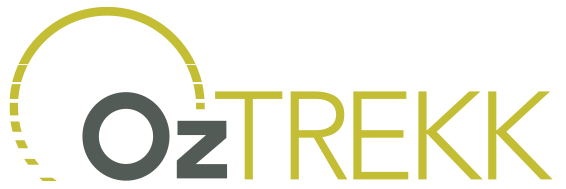



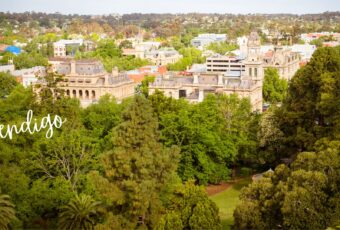







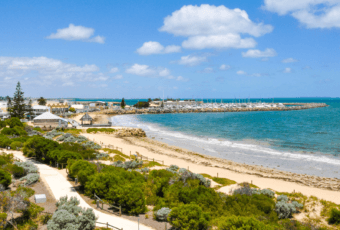





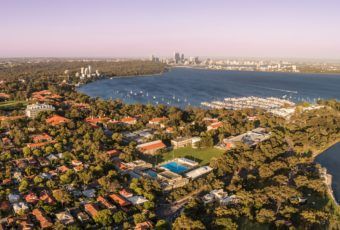






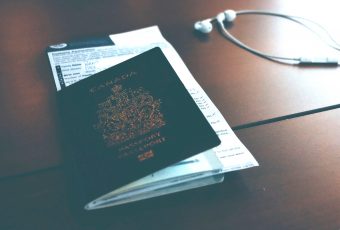







Ask A Question
Ask us about your program of interest, or if you have a question about our services.
CONTACT US TODAY